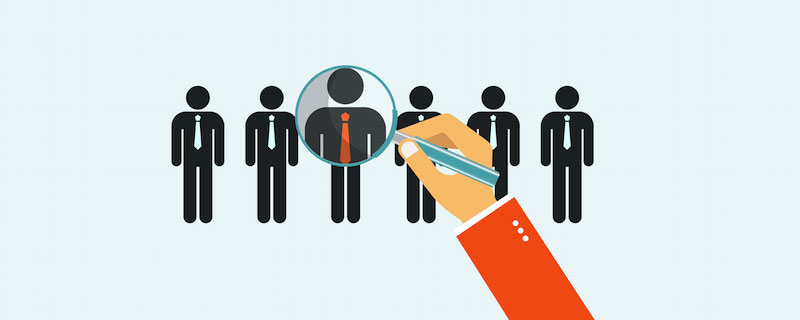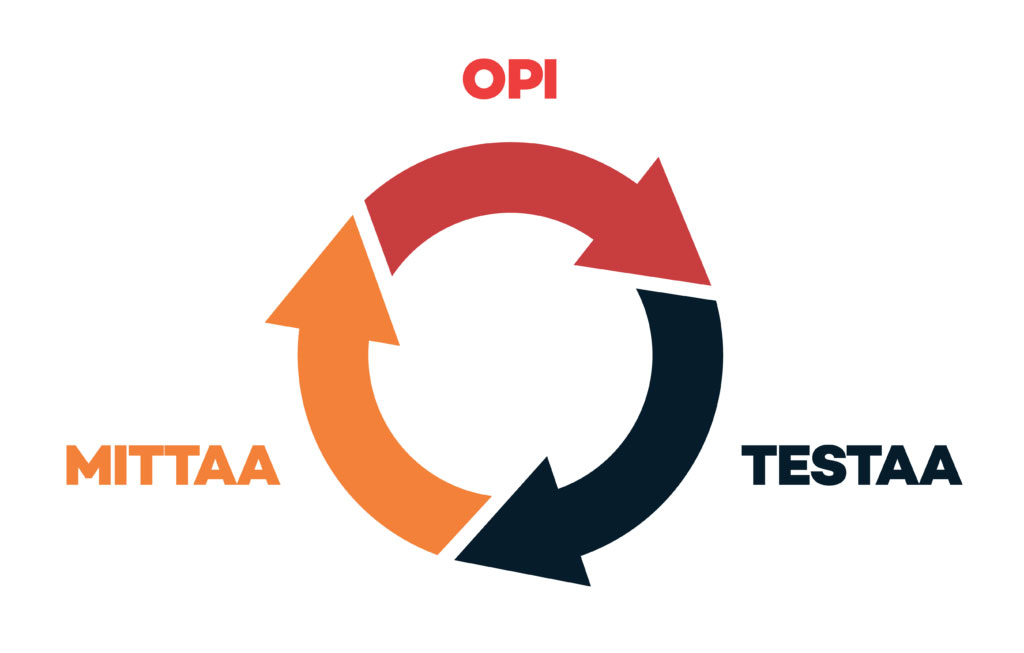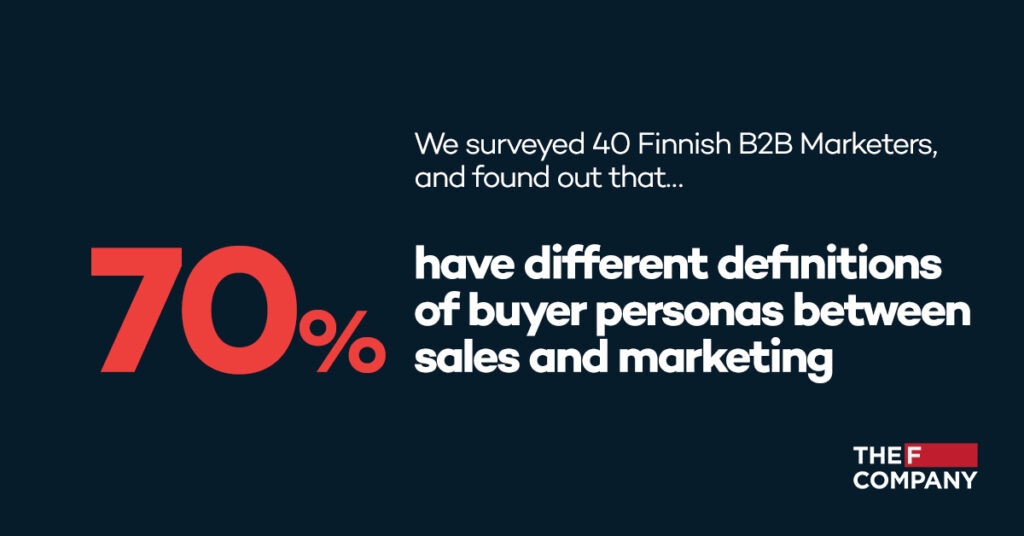Do you know your buyer personas?
What challenges do they face in their daily life? What are their biggest interests and concerns?
Easy questions – or are they? We’ve noticed that B2B marketers often have a flawed image of their buyer personas.
Marketers love buyer persona workshops! B2B marketers tend to define their personas multiple times. Buyer personas created like this tend to consist of assumptions that don’t hold up to reality.
Don’t get me wrong, creating a buyer persona is a good start. But then you need to back it up with data!
In this blog we help you create data-driven B2B buyer personas to fuel your growth marketing. Avoid the common pitfalls and define personas properly from the beginning.
Don’t make these mistakes
- Don’t define the persona from one viewpoint. Many marketers create buyer personas only based on one stage of the customer journey. Ideally, buyer personas result from the collaboration of many teams.
- Don’t create the persona for just one purpose. Buyer personas are often built as a side task of a website renewal or marketing campaign. When the project ends, the persona is left unused.
- Don’t only think about content creation. Many organizations use personas only to support content creation. And to make matters worse, the success of the content is not even always measured!
Buyer personas have a lot more in store. When you create personas using data, they help you in many areas: product development, ad campaign targeting, service packaging, communication, customer acquisition… and the list goes on.
In short, buyer persona tells you where to find your customers, how to get their attention, and how to sell to them. Marketing brings results quicker and with less costs.
Buyer personas are never…
- Certain. Persona is a hypothesis – a reflection of your real customer.
- Static. Persona needs to be constantly updated and adapt to changes. It’s never ready.

Now you know what the buyer persona is not. Next, we’ll help you build the persona step by step.
1. Set your primary goals
Figure out the ultimate purpose of your persona. What do you want to find out? Remember to consider each stage of the customer journey all the way until the end.
Maybe you want to…
- Convert new clients more efficiently?
- Find the ideal target audience for your new service?
- Understand where your customers spend time – which channels work and which don’t?
- Ensure a better customer experience?
You can (and should) have more than one goal. As I mentioned earlier, the purpose of the persona is to be adaptable to time and changes. However, make sure your goals support one another!
2. Collect data of your customers
The first step is to get a deep understanding of your target audience. You can start by searching answers to the following questions:
- Who your clients are?
- How do they behave?
- What are they interested in?
- What kind of challenges do they face?
Check Hubspot’s list of what you should consider when defining buyer personas.
Use many different data sources
Use both qualitative and quantitative data. The more versatile sources you use, the better. You want to get a big picture of your customers rather than a few random insights.

Analyse your website analytics
Which keywords do people use the most? Can you spot behavioral patterns? How do people find your website and what are they looking for?
Dive into your CRM system
Which job titles do your customers have? Do they work in large or small companies? Do your assumptions match the real customer profiles?
Analyse your previous marketing campaigns
Which content, copies and pictures generate the best results? Who clicks your ads the most? Which messages resonate and bring customers?
Pay attention to the metrics that support your goals. Do you want to focus on the number of leads? Or find out which messages lead to sales and convert the most customers?
Clicks, conversions and leads are all important metrics. They imply that you are targeting the right message to people who resonate with it. However, if these people never end up your customers, you might be targeting the wrong persona.
Do research in social media
Look into the analytics of your social media channels. Explore also what your ideal customers talk about in these channels, and how.
What do they post? Which titles do they use? What are the hot topics in your industry right now? LinkedIn and Twitter are optimal platforms for this kind of research.

Interview salespeople
Interview people that talk to your customers directly in some part of the journey. Start from sales and customer support.
The goal is to get insights on potential customer profiles. Ask different types of questions. Which concerns recur in customers’ calls? How do people react to sales contacts? What kind of people are the most interested in your service?
Interview customers and prospects
To get the best understanding of the true personas and their needs, interview your current customers. Figure out who are your best customers financially, and who do you provide the most value to. Pay extra attention to customers that score high in these measures:
- Customer Lifetime Value, CLTV
- Customer satisfaction (e.g. Net Promoter Score)
- Use of product and service (e.g. product analytics, registrations etc.)
- Importance of your product and service (you’ll find out in the interview)
You can also interview your other customers, as well as previous or potential ones. But keep in mind that not all of them are the best buyers for you.
If your customer base is large and you don’t have a personal connection to them, you can also ask them to fill in surveys. Keep the surveys short and concise to make sure you get answers to your most relevant questions.
After going through all the sources listed above, you should already have a lot of useful information. Next, you should check whether these assumptions actualise in practice. I’m talking about testing. Let’s delve into that next.
3. Test, test and test
Experimenting is the easiest way to find your ideal B2B-buyer persona.
- Who resonates with your messages?
- Who brings in the sales?
- Which channels convert the most customers?

Stop hesitating, start testing
There are hundreds of things to test. Do A/B-testing for copies and images. Vary the questions in forms. Launch the same campaign in many different channels. Make small changes and measure the results.
Don’t know where to start? Read our advice on how to start experimenting here. But my most important advice is: just get started! You will learn the most by doing.
Remember to test only one thing at a time. It’s difficult to draw viable conclusions on the experiment if you don’t know which factor was the critical one.
Identify demographies and behavioral patterns
After a few experiments, you start recognising trends and patterns, demographies and characteristics. Soon you’ll be able to answer many questions, such as:
- Does a majority of your leads represent a certain sex?
- Which tasks and responsibilities show up repeatedly?
- Which generation do (or don’t) your customers belong to?
Put your insights to use
As you get more insights, use them in further testing – for example ad targeting. In LinkedIn and Facebook audiences you can crop out people who don’t fall into your ideal age group.
More Information ≠ Better Persona
Many people seem to think that more information equals better persona definition. Well, there’s a bit of truth – more information makes the persona feel more concrete. But there is a challenge.
Let’s consider a situation where your ideal customer is an IT manager. Does it provide any value to know that this IT manager has a labrador? On the B2C-side this may be useful – in some cases. But if you don’t sell dog food, this information distracts you from more relevant things. In B2B marketing, keep your focus on work-related things: responsibilities, decisions and challenges.

What information is useful, then?
The line between useful and useless information is vague. Think about your product or service – what is relevant for you?
It might be helpful to think what your customer’s everyday life really consists of. For example, recruiting is only a fraction of HR manager’s job. The title seldom tells everything. Ask yourself: What are their main tasks and responsibilities? Does your company provide a solution to their problems? Does your service help them do their job better?
Regardless of your industry, you should document at least the following:
- Name
- Age
- Title + decision maker or not?
- Responsibilities
- Industry
- Education
- Goals and motivations
- Challenges
And how many personas are needed?
The number of buyer personas depend on the size of your company and offering. The less personas, the easier they are to handle. But be careful – don’t cut too many corners. That will make the planning of your communication and strategy more difficult in the future.
Keep buyer personas up to date
Now, are the buyer personas finally ready?! Well, as you may remember, they will never never finished. You need to keep testing. Keep analysing data. Keep updating the persona. But from now on, it will be much easier as you can modify the existing persona to upcoming changes.
Integrate technologies and share data
We recently surveyed Finnish B2B marketers and did an alarming finding: 70% of the respondents said their marketing and sales have different definitions of buyer personas.

This may happen if you don’t share information between different units. It is particularly important to share data with marketing, sales and customer service. When customer data flows between units, everyone stays on the same page and sees the customer journey as a whole.
How to get the data in one place? One way is to integrate your different technologies. You can integrate your website and marketing tools to your CRM software. When someone fills out a form on your website, the data is sent directly to CRM. Centralizing data also helps to analyze it and recognize patterns. This way you can also keep your buyer personas up to date with less effort.
Conclusion
Follow these tips and you’re well on track building your B2B buyer persona. The process is quite fascinating, isn’t it? You get to dive into a massive amount of data. In addition to figuring out your ideal customer, you might also get valuable insights on other areas of your business!
If you need more help with your buyer personas or B2B marketing, contact us!
